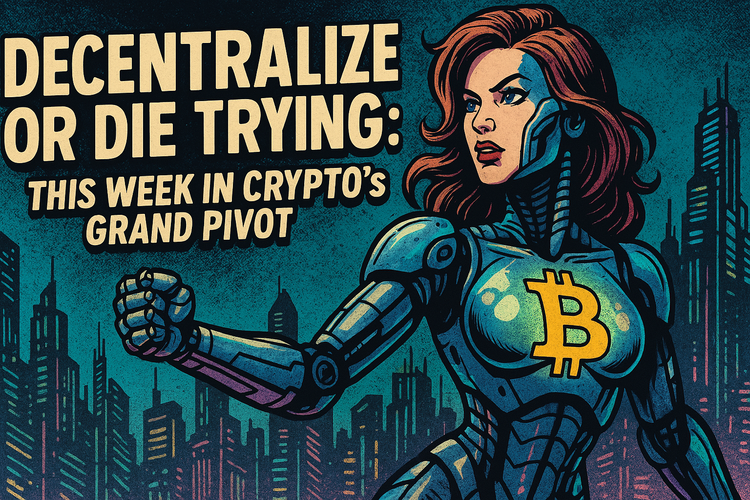Revolutionizing Debt Capital Markets: The Emergence of Smart Bonds

The world of finance is undergoing a major transformation as blockchain technology continues to gain traction. Smart bonds, digital bonds stored on a distributed ledger, are poised to disrupt debt capital markets and revolutionize the life cycle of debt instruments. By enhancing process efficiencies, reducing costs, and simplifying capital raising, smart bonds are set to create a more inclusive and accessible financial landscape.
A Brief History of Bonds
For centuries, bonds were issued as paper certificates, but as trading volumes grew, companies struggled to keep up with paperwork. In response, the Depository Trust Company (DTC) was created in 1973 to address mounting security and paperwork issues. The era of paper securities ended in 1995 with the Securities and Exchange Commission (SEC) introducing the Depository Trust & Clearing Corporation (DTCC), which allowed for faster middle and back office processes and greater protections in the securities market.
Blockchain and Smart Bonds
While electronic processes improved efficiencies, extended settlement timelines became an issue during the 2008 financial crisis. Capital market participants desired a system with accurate information and expedited settlement, which is where blockchain technology and smart bonds come into play. Smart bonds use blockchain to automate various stages of a bond's life cycle and execute specific actions based on predetermined conditions without manual intervention.
Digitalization and the Disruption of Debt Capital Markets
Smart bonds offer multiple benefits, including:
- Straight-through processing (STP) – Optimizing debt securities issuance, trading, clearing, settlement, and interest payments by reducing time and resources required to execute transactions.
- Reduced intermediaries – Cutting out intermediaries like banks, brokers, and clearinghouses lowers the overall cost of managing bonds.
- Automated issuance and trading – Bond details can be coded into a smart contract and stored on a blockchain, ensuring authenticity, provenance, and transparency.
- Simplified clearing and settlement – Smart contracts can automatically trigger clearing and settlement processes, reducing time and exposure to price swings.
- Automated interest payments and maturity – Smart contracts eliminate the need for a central counterparty, reducing counterparty risk and ensuring timely payments.
- Increasing Financial Inclusion: Smart bonds have the potential to increase financial inclusion by offering a broader investable landscape to retail investors. The tokenization of bonds allows for fractional ownership, enabling investors with limited capital to participate in the bond market.
- Environmental, Social, and Governance (ESG) Benefits: As the world becomes more focused on sustainability, smart bonds play a critical role in promoting environmentally and socially responsible investments. These digital bonds can be used to finance ESG projects, offering greater transparency and traceability of funds and ensuring that the capital is allocated toward its intended purpose.
Role of Smart Bonds in Emerging Markets
Emerging markets benefit significantly from adopting smart bonds, as they can enhance liquidity, reduce costs, and improve transparency. By simplifying the process of issuing and trading bonds, smart bonds can attract more foreign investments into emerging markets. Furthermore, the increased transparency offered by blockchain technology can reduce the risk associated with investing in these markets, boosting investor confidence and promoting economic growth.
Innovative Bond Structures
The flexibility of smart bonds enables the development of innovative bond structures tailored to the specific needs of issuers and investors. For example, smart bonds can incorporate dynamic interest rates that adjust based on market conditions or the performance of the underlying project. This can create more attractive investment opportunities while simultaneously providing issuers with a more efficient means of managing their debt obligations.
Security and Regulatory Concerns
Despite the benefits, there are concerns that smart bonds may be vulnerable to hacks and other security breaches. However, smart bonds are not bearer assets, and their ownership is automatically registered on the blockchain, which means fraudulent transfers can be invalidated. Transfer agents may be used to safeguard customer assets, but this decreases decentralization.
Future Developments and Challenges
As smart bonds gain traction, addressing the challenges associated with their adoption is crucial. Key areas to focus on include:
- Regulatory Framework: Establishing a clear and robust regulatory framework is essential to ensure the growth and stability of smart bonds. Regulators must work closely with industry participants to develop guidelines that address potential risks while promoting innovation.
- Interoperability: To realize the full potential of smart bonds, it is necessary to create an interoperable ecosystem that allows for seamless communication between different blockchain platforms and traditional financial systems.
- Education and Awareness: Educating market participants about the benefits and risks of smart bonds is critical to driving widespread adoption. Increased awareness can help bridge the knowledge gap and encourage more investors and issuers to embrace this innovative financial instrument.
Conclusion
Digitalizing financial instruments lead to significant innovations in capital markets operations, and smart bonds are no exception. Regulatory hurdles may slow adoption in the short term, but as infrastructure evolves and more organizations and municipalities embrace the technology, we can expect greater innovation and growth in the world of smart bonds. By transforming the life cycle of debt instruments and disrupting debt capital markets, smart bonds have the potential to revolutionize the financial landscape and create a more inclusive, accessible, and efficient system.
Please share your thoughts on the article by clicking below Emoji ...
Disclaimer
*The information and analysis provided in this article are intended for educational and informational purposes only and should not be considered as financial, investment, or professional advice. While our team strives to ensure the accuracy and reliability of the content, we make no representations or warranties of any kind, express or implied, about the completeness, accuracy, reliability, suitability, or availability of the information presented.
The content within this article may include opinions and forward-looking statements that involve risks and uncertainties. The blockchain and cryptocurrency markets are highly volatile, and past performance is not indicative of future results. Any reliance you place on the information presented is strictly at your own risk. Before making any investment decisions, we highly recommend consulting with a qualified financial advisor or conducting your own thorough research.
By accessing and using the information provided in this article, you acknowledge and agree that neither the authors, publishers, nor any other party involved in the creation or delivery of the content shall be held liable for any direct, indirect, incidental, consequential, or punitive damages, including but not limited to loss of profits, goodwill, or data, arising out of your use or inability to use the information provided or any actions you take based on the information contained within this section.*








